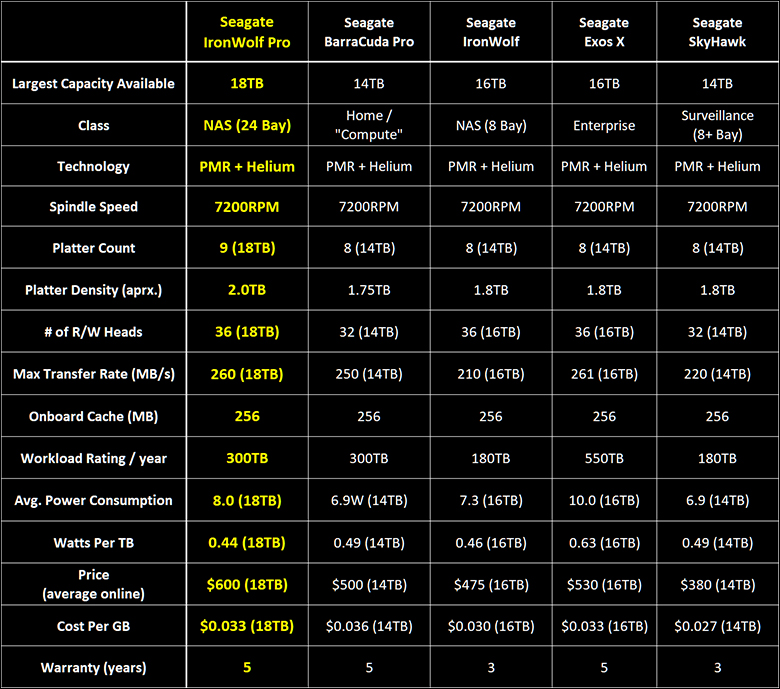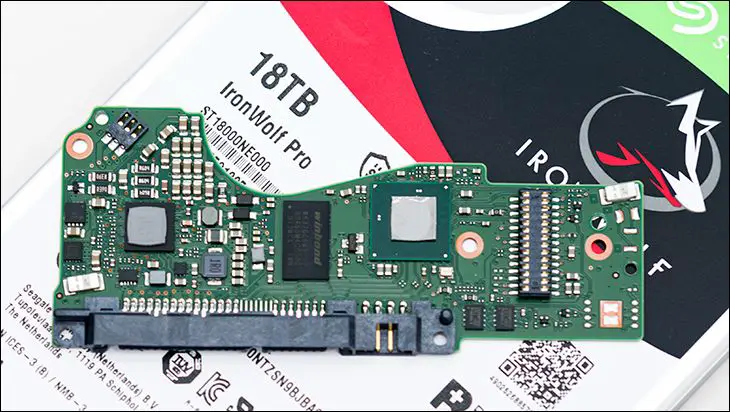If a mere decade ago someone was to tell us that by the end of Q3 2020 even the average consumer would be able to readily buy a single hard disk drive with 18 Terabytes of capacity… we would have been incredulous to say the least. Assuming we had actually been convinced they were not some pie-in-the-sky futurist in desperate need of another shot of Thorazine, our assumption (and dream) would have been that the ‘old school cool’ Shugart “mini-floppy” 5.25-inch form-factor had made a comeback. Finally made a comeback and replaced the “Sony floppy” / “Rodime 352” 3.5-inch form-factor with our beloved ST-506 form-factor… and yet here we are. A mere ten years later and we have gone from three Terabytes being considered ‘huge’ to 18 Terabytes worth of storage (though to be pedantic we have gone from 2.73Tib to 16.76TiB of ‘real world’ / ‘formatted’ capacity in just one decade). All in a standard 3.5-inch form-factor. All in ten years. All thanks to manufacture’s like Seagate and their $600 (USD) IronWolf Pro 18TB model we will be looking at today.

The latest IronWolf Pro 18TB is rather interesting, and upon perusal of the datasheets, it appears that Seagate has gone back to a production model that Intel made (im)famous with their ‘Tick-Tock(…tock-tock-tock)’ nickname. Breakthroughs are hard to consistently do every generation… so, much like Intel’s ‘Tock’ generation, the IronWolf Pro 18TB model is mainly relying upon increased platter density to sell it to buyers. Compare and contrast this with previous models which introduced MTC or TDMR or other new and shiny tech improvements to go along with their capacity increase, and that seemingly does make the latest a harder sell than its predecessors.
Make no mistake, this is still one hell of a sale pitch. For the first time ever even home buyers can access 2 Terabyte Platter technology. Two Terabyte platters that use PMR/CMR recording and not mediocre performing SMR. That however, is about all the product literature makes note of as being notably changed on the hardware front. So, expect the same dual r/w head ‘PMR+ TDMR’ tech. The same good, if falling behind the competition’s capacity, 256MB of MTC cache. The same 9 platters in a Helium medium design. Even the same, albeit excellent, warranty the 16TB came equipped with.
To be fair, Seagate is also relying upon a lowered price per TB with higher density to help interest SMB and enterprise buyers. On launch, the 16TB IronWolf Pro was asking a cool $629 (USD) and touting its increased density per rack abilities. So, coming in about $30 cheaper with a ~11.1 percent increase in potential rack density is nothing to sneeze at when thinking about file servers with petabyte(s) of storage capacity requirements. Even with ‘small’ servers with only a single 24 bay this increase works out to a (relatively) reasonable $33.33 per TB and 432TB of raw capacity. Still outside the realm of reasonable for the buyer looking for the best bang for their buck, but rather reasonable none the less for the intended market demographic.
That last caveat is key to understanding Seagate’s focus with their new IronWolf Pro 18TB model. Technically the IronWolf Pro’s are “supposed to be” only for professional’s interested solely in Network Attached Storage models… and previous ‘Wolf Pro generations happily gained traction in other corners of the market thanks to timely price cuts and lack of availability of larger BarraCuda Pro models. For business professionals the upfront asking price is not the be all and end all of the decision-making process. Instead it is just the beginning. The total price of hitting a given fileserver’s storage capacity requirement, and doing so with the best electrical and waste heat to performance ratio possible is what truly matters. Thus, the latest IronWolf Pro may have a bit an easier time of things that it first appears. Let’s take a closer look and see if there are other mitigating factors at play. Factors that may change peoples mind about this new generation and help the latest IronWolf Pro live up to the high standards of its predecessors in more than just one market.











